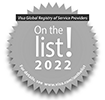A significant number of employees are anxious about having to adapt to a new way of working once again. Concern over returning to the office is high, with 87% feeling at least a little anxiety and 36% feeling extreme anxiety. These are among the findings of a survey of 3,000 employees conducted by Vitality, a global health and wellness provider, to understand the future of work and the challenges facing employers. The United States respondents represented 1,000 employees across a spectrum of industries, generations, and work settings.
“Our research shows that American employees have settled in terms of where and how they are working,” said Tanya Little, Chief Growth Officer at Vitality. “They worry that a return-to-office arrangement that differs from their current set-up could create risks such as contracting and spreading COVID-19, loss of work-life balance, and financial pressure from additional expenditures. Employers need to approach these concerns thoughtfully, or risk losing their best people – especially as a third of employees said they were likely to change jobs if their employer’s return to work plans did not match their preferences.”
Key US findings include:
- If required to return to the office full-time, 45% of hybrid employees and 60% of remote workers would be at risk of quitting.
- Well-being, mental health, and emotional needs have become more important for employees in the past year and managers play an integral role in meeting these needs. For example, 73% of employees say their manager helping them maintain a life and work balance is moderately to extremely important. However, they don’t expect that their manager will give them time out of their day to:
- Maintain their mental health (30%)
- Participate in well-being promoting activities organized by work (26%)
- Exercise or going outdoors (27%)
- Socialize with colleagues (24%) and people outside of work (22%)
- None of the activities noted above (33%)
- Diversity and inclusion are critical factors for employees, with 72% saying that their employer taking diversity and inclusion seriously would affect their future career choices.
- More than half (53%) of US employees said they would be more comfortable going back to the office if they knew everyone was vaccinated and 49% believe companies can and should mandate vaccinations. Those unwilling or reluctant to get the vaccine are much less concerned overall about returning to physical workspaces, with 42% saying they have no concerns about returning to work compared to just 29% of vaccinated individuals.
- It appears that programs employers have put in place to support employees have not trickled down to more junior employees. Across well-being dimensions, entry-level employees are much less satisfied (ranging from 34% to 41%) than senior employees (ranging from 62% to 64%).
- Related to maintaining mental health, younger, entry-level employees feel significantly less supported by their managers (21%) while 42% of senior employees feel supported.
- These seniority differences are seen across well-being activities, including exercising, going outdoors, participating in work-organized well-being activities, socializing, volunteering, and caring for children and relatives.
“The results indicate a worrying trend across dimensions as younger people, particularly women and people of color, are disproportionately struggling,” said Jenny Carrillo, Ph.D., Senior Vice President of Health Solutions. “Even before lockdowns, Gen Z fared much worse than other generations with 18% rating their mental health and well-being as somewhat to very bad, compared to just 9% of Boomers. Post lockdown, other generations have stabilized to pre-pandemic levels. However, Gen Z has further declined, with 27% rating their mental health and well-being negatively and 13% for women. Given the varying preferences and needs among employees, a one-size-fits-all approach isn’t going to work.”
The full survey of 3,000 individuals was conducted in the United States, United Kingdom, and South Africa over the course of the spring and late summer/fall. The US results can be found here, the UK report can be found here, and a global report comparing trends will be released soon.






